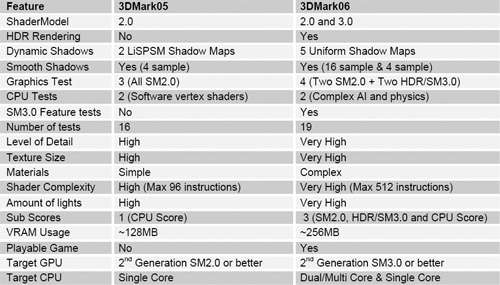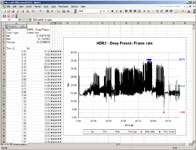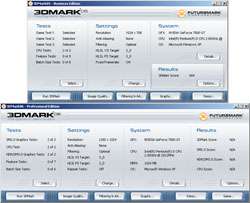- Qualcomm Launches Snapdragon 4 Gen 2 Mobile Platform
- AMD Launches Ryzen PRO 7000 Series Mobile & Desktop Platform
- Intel Launches Sleek Single-Slot Arc Pro A60 Workstation Graphics Card
- NVIDIA Announces Latest Ada Lovelace Additions: GeForce RTX 4060 Ti & RTX 4060
- Maxon Redshift With AMD Radeon GPU Rendering Support Now Available
In-Depth Look: Futuremark 3D Mark 06

We take the latest version of the popular benchmark for a test-drive to see what’s new, what’s changed and what you need for a good score. To put it simply, 06 is like 05, but on steroids. Let’s take a look..
Page 2 – What’s new in 06?
Whenever I see a new version of the program released, I admit I get excited. Most times, the tests are so bleeding edge, that you can’t experience the same graphics with any current game. That’s for the better though, because who wants to play the latest game at 8 frames per second? Without a doubt, the tests are enjoyable to watch, and if you want to jump right into the screen shots, they can be viewed on page six.
One thing you will notice immediately, is that the tests look familiar. All three tests from ’05 make a triumphant return in ’06, but make no mistake, they are not that similar. In addition to those though, a new test entitled “Deep Freeze” has been added, which will be used to show off HDR’s capabilities of your card.
The reason Futuremark releases new versions of their program, is because that the graphic technologies are constantly evolving. As with all previous versions, this new one puts bleeding edge GPU features to use. We will see some Shader Model 3.0 being used in some of the tests, and as already mentioned, HDR will play a large role also.
Every aspect of these new tests have been “kicked up a notch”. The level of detail has been made larger and the same goes for texture sizes. The Shader complexity is quintupled, lights increased and VRAM usage increased. Whereas a 128MB graphics card may have sufficed in ’05, you will want a 256MB in ’06 to obtain a decent score.

It’s apparent that Dual Core processors are going to be the choice for most people in the near future. We are already seeing huge benefits of the processors, and games are currently in production that are developed to specifically take advantage of the tech. It’s no surprise then, to see Dual Core / Multi-Core support in ’06, and trust me, it does make a difference.
When you run the benchmark, you will notice that an AGEIA PhysX logo is featured. At first, I believed this was because the card would be supported in the tests, but that’s not the case. For the CPU tests, Futuremark implemented the PhysX physics libraries, which is why they included the logo. They have no intentions of adding support for the card, especially since there is no expected release date.
Support our efforts! With ad revenue at an all-time low for written websites, we're relying more than ever on reader support to help us continue putting so much effort into this type of content. You can support us by becoming a Patron, or by using our Amazon shopping affiliate links listed through our articles. Thanks for your support!








